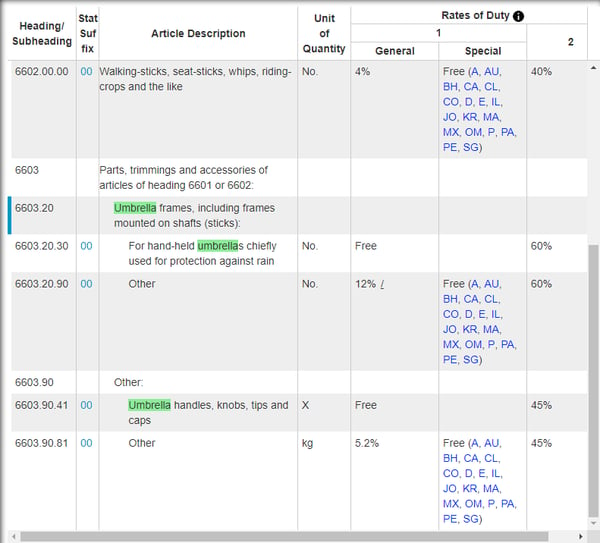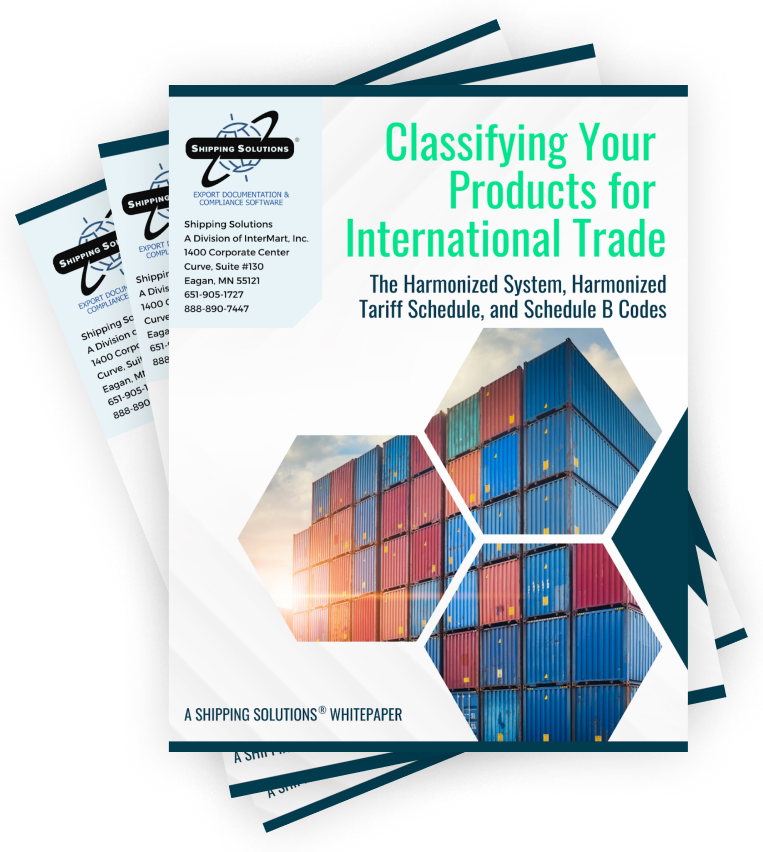The International Trade Blog Import Procedures
How to Use the Harmonized Tariff Schedule of the United States
On: May 20, 2024 | By:  David Noah |
6 min. read
David Noah |
6 min. read
 As an exporter, you’re probably familiar with the Harmonized System (HS) and Schedule B codes, but you may not be as familiar with the role of the Harmonized Tariff Schedule, or HTS codes.
As an exporter, you’re probably familiar with the Harmonized System (HS) and Schedule B codes, but you may not be as familiar with the role of the Harmonized Tariff Schedule, or HTS codes.
In this article, we’ll cover the basics of the HTSUS, including what it is, when it should be used and why Schedule B codes are a better option for companies that export only.
What Is the Harmonized Tariff Schedule of the United States?
The Harmonized Tariff Schedule of the United States (HTSUS or HTS) is a U.S. nomenclature system used to classify traded goods based on their material composition, product name and/or intended function. The HTS is a 10-digit code designed so that each article falls into only one category. It is divided into chapters, each of which has a 2-digit number. Each product category within the various chapters is designated by 4, 6, 8 or 10 digits. The 4-digit categories are called headings. The 6-, 8- and 10-digit classifications are called subheadings.
U.S. Customs and Border Protection (CBP) uses this system and its rules to classify imported goods. HTS codes are also used to determine duty rates applied to imported goods. Nearly every good that is imported into the United States is classified in an 8-digit category.
HTS Codes: An Example
Let’s look at an HTS code example for umbrellas: 6603.20.3000, which includes the description: "For hand-held umbrellas chiefly used for protection against rain" (vs. 6603.20.9000, which is for all other hand-held umbrellas not chiefly used for protection from rain).

Global and U.S. HTS Codes have four components, which are identified by the green numerals beneath the digits:
- Chapter: In this example, 66 is the chapter.
- Heading: In this example, 6603 is the heading. The heading dictates the specific category within any particular chapter.
- Subheading: 6603.20 is the subheading. The last 2 digits of the international Harmonized Code are more specific, defining subcategories of products.
- Extra digits: 6603.20.3000 is the suffix (or extra digits). Countries can use an additional 2-4 digits for country-specific categorizations. For example, the United States relies on 10-digit codes (the HTSUS numbers).

If you are a U.S. importer of this particular product, this is the code you must use. The comprehensive classification list is available for free on the ITC website. You can do a search for HTSUS codes here:
HTS Codes vs. HS Codes
The HTS uses the nomenclature structure of the Harmonized System (HS), administered by the World Customs Organization (WCO). It is used across the globe, making it a universal classification tool. There are 6 digits in an HS code, and many governments add additional digits to the HS number to further distinguish products in certain categories. These additional digits are typically different in every country—that’s where HTS codes (and Schedule B codes!) come in.
.png?width=700&height=481&name=HS%20Codes%2c%20HTS%20Codes%20and%20Schedule%20B%20Codes%20Whats%20the%20Difference%20(1).png) As noted in our article HS Codes, HTS Codes, and Schedule B Codes: What's the Difference?, an HTS code takes the same form as an HS code for the first 6 digits and then has 4 differing last digits.
As noted in our article HS Codes, HTS Codes, and Schedule B Codes: What's the Difference?, an HTS code takes the same form as an HS code for the first 6 digits and then has 4 differing last digits.
Schedule B Codes vs. HTS Codes
Schedule B and HTS codes are separate entities that are used for exporting and importing respectively. The Schedule B code is a 10-digit subset of HTS codes for U.S. exporters. Schedule B codes are used for statistical purposes by the U.S. government to monitor U.S. exports.
Schedule B codes are maintained by the U.S. Census Bureau instead of the ITC. As with HTS codes, the first 6 digits of a Schedule B code should be the same as an HS number; however, the last 4 digits may be different even than the HTS code.
HTS or Schedule B: Which Code Should You Use?
If you’re doing both importing and exporting, you are required to use HTS codes for your imports, so you might as well continue to use those codes for your exports as well. Note: There are some exceptions to this rule; the Census Bureau publishes a list of HTS codes you can’t use for exports.
However, if you’re exporting only, we recommend using the Schedule B code because it isn’t nearly as detailed or complex as HTS codes. Schedule B codes are the easiest way to go for exports.
How to Identify Your Product’s Correct Code
- The Census Bureau offers a free online Schedule B search tool that can help you classify your products. Follow the on-screen instructions to find the appropriate code for your product.
- If you can’t find the Schedule B code you need after searching online, consult a commodity specialist at the U.S. Census Bureau Foreign Trade Division.
- Your local U.S. Commercial Service International Trade Specialist can help you identify the appropriate HS and Schedule B codes, as well as duties and taxes for specific countries.
- If your product is difficult to classify, the Customs Rulings Online Search System (CROSS) database can help you find its HTSUS. CROSS contains official, legally binding rulings from other companies’ requests for HTSUS. Use this database to determine whether other exporters or importers requested a ruling on the same or a similar product and, if so, what that ruling was.
Additional Resources
Our Product Classification Software can keep you on the right side of regulations by helping you properly classify all your products. You can give it a try for free!
Articles specific to HTS codes:
- Classifying Your Goods for Import and Export Requires Expertise
- When Classifying Parts Using HTS Codes, Read the Notes!
- Doing It by the Book: Classifying Your Goods for International Trade
- HTS Codes: The Importer’s Ultimate Guide
General articles on HTS, HS and Schedule B codes:
- Why You Shouldn’t Include HS Numbers on a Commercial Invoice
- What's the Difference between a Schedule B Code and an HS Number?
- Export Codes: ECCN vs. HS, HTS and Schedule B
Like what you read? Subscribe today to the International Trade Blog to get the latest news and tips for exporters and importers delivered to your inbox.

About the Author: David Noah
As president of Shipping Solutions, I've helped thousands of exporters more efficiently create accurate export documents and stay compliant with import-export regulations. Our Shipping Solutions software eliminates redundant data entry, which allows you to create your export paperwork up to five-times faster than using templates and reduces the chances of making the types of errors that could slow down your shipments and make it more difficult to get paid. I frequently write and speak on export documentation, regulations and compliance issues.



